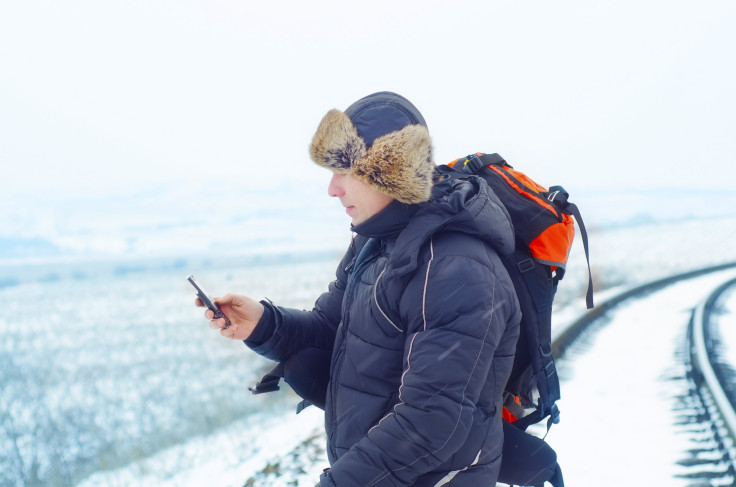5 Effects Of Extreme Cold On Smartphones; How To Protect Your iPhone Or Android Device From The Elements

The temperature in New York City on Tuesday was a high of 19°F and a low of 4°, which is being blamed on the Polar Vortex that is ravaging most of the country with icy weather.
Stepping into the bitter cold, you may have noticed such bodily effects as numbing of the extremities and difficulty breathing. But people are not alone in battling the effects of the cold. Some of our most prized possessions also react to the dipping thermostat: our mobile devices.
Smartphones are known to withstand cold temperatures much better than hot; however, extreme cold temperatures can have adverse effects on our favorite gadgets. Studies have shown that many Android devices fare better in the cold than Apple devices, but smartphones across the board appear to succumb equally at about -40 Degrees, where all functionality ceases.
Though it may just feel like its -40 out, recent temperatures are actually low enough to elicit negative effects on smartphones. Here’s a list of issues than can arise in your smartphone due to the cold.
Battery drain/death
Battery drain is one of the most immediate effects of cold weather. Devices may spontaneously shut down with a dead battery in the extreme cold. Over time, extended exposure to cold temperatures can kill a smartphone battery all together.
Screen issues
Smartphones with LCD displays are more susceptible to the cold than those with AMOLED displays. With LCD displays in particular, users may experience delayed touchscreen reactions as well as smudging and ghosting of text and colors. Display panels are also more susceptible to shattering when dropped as the cold makes the panel rigid.
Internal component errors
In extreme cold temperatures smartphones may begin to register various errors of a their internal components. Devices may have difficulty reading a SIM card or executing a number processing functionalities.
Physical damage to internal and external components
As said, extreme cold causes components of smartphones, both internal and external, to become rigid, which could lead to physical damage like spontaneous screen shattering. Drops or blunt movements can also crack a screen and dislodge or damage internal components. Devices left in extreme cold temperatures for an extended time can be susceptible to permanent damage, especially when left in ‘sleep mode.’
Liquid condensation
Smartphones are susceptible to liquid condensation underneath their displays if they are used soon after being brought into a warm area after an extended time in the cold. This can cause various liquid damage issues and can also make the screen hard to read.
Tips to protect your smartphone from the cold
Don’t take your smartphone out in the cold/limit use in the cold. Leave your smartphone in your pocket, jacket, bag or purse. Leaving devices in a pocket close to your own body heat is most recommended.
Protect your smartphone with a heavy duty, weatherproof case such as an OtterBox or Lifeproof case. Such cases are dirt proof, waterproof and drop resistant.
Use warming gloves when handling a smartphone in the cold. Whether gloves are warmed or not, protecting yourself in the cold will also help prevent accidental drops due to your own physical reactions to the cold.
Don’t leave your smartphone in a cold vehicle for extended periods of time, especially not overnight. Such extended use can cause permanent internal and external damage.
Keep your smartphone away from or protected from snow related activities such as shoveling or sledding. In addition to the cold, the opportunity for the device to get wet is also great and extremely damaging.
Use headphones or a Bluetooth earbud and mic in order to keep smartphones put away while out in the cold. Not only do many Bluetooth devices have call answer buttons, many smartphones have quick answer options, which will allow users to take calls without handling the device.
Charge your smartphone before going outside. If your battery is fully before going out into the cold, it is less likely to experience battery drain. Keep a mobile charger around for long trips as well as an extra battery for backup.
What to do if your smartphone is exposed to extreme cold
If your smartphone happens to be exposed to extreme cold, the best thing to do is to turn the device off and allow it to warm back up to room temperature before turning it on again for use. This not only helps prevent condensation, but also helps prevent any other damage that might occur while the device is warming up.
What do you do to protect your smartphone from the cold? Let us know in the comments below.
Follow me on Twitter @FionnaatIBT.
© Copyright IBTimes 2024. All rights reserved.












